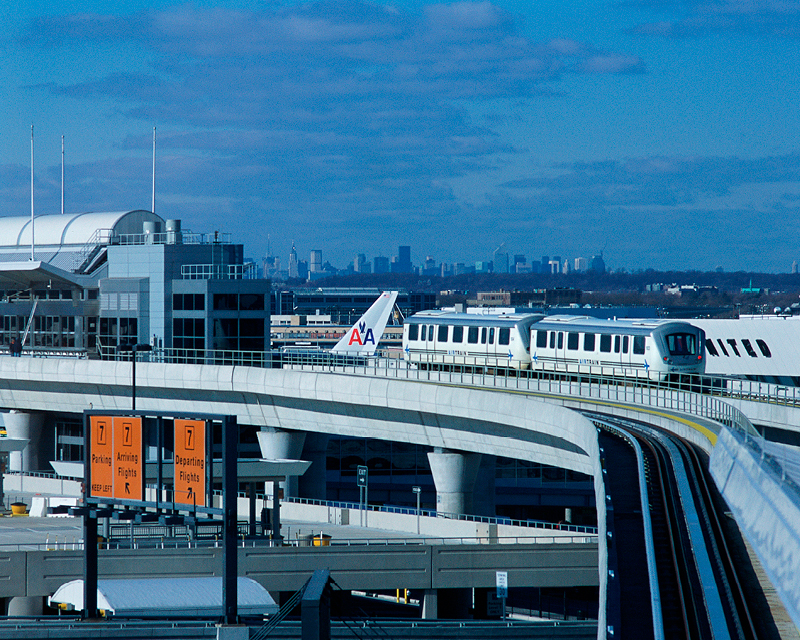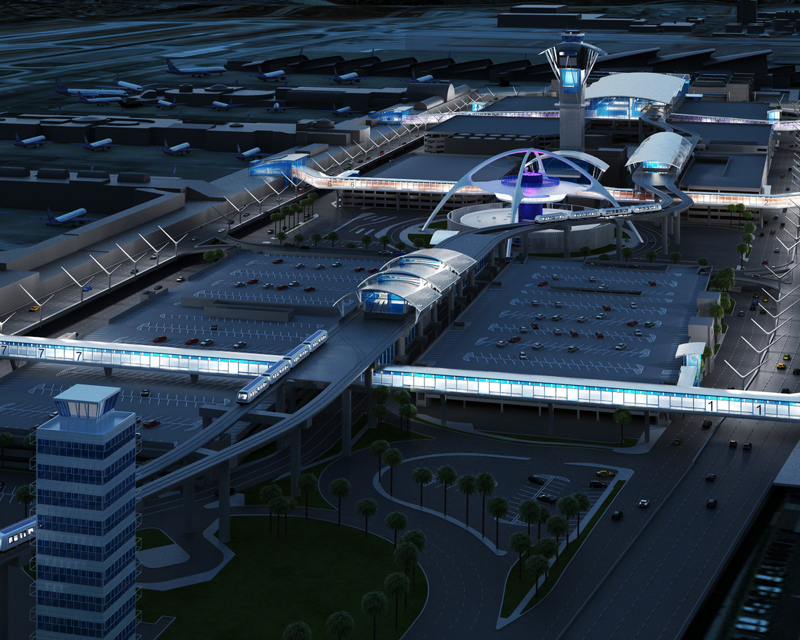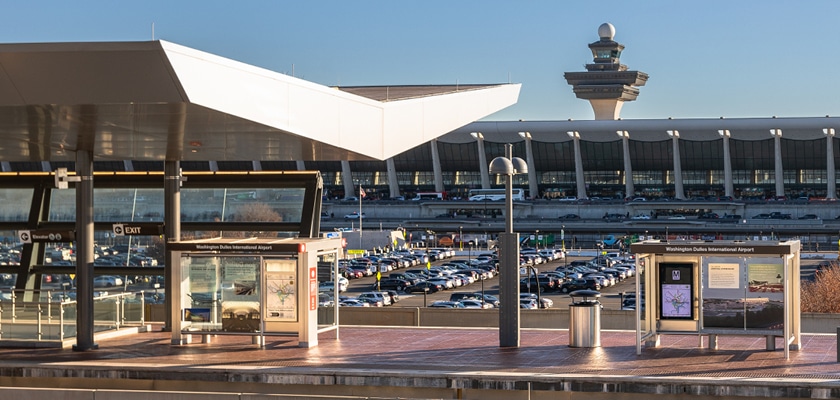
Last year’s completion of the Washington Metropolitan Area Transit Authority’s (WMATA) Silver Line Extension to Washington Dulles International Airport marks yet another U.S. metropolis that opted to connect its airport to a passenger rail system. STV was a key player in this multi-billion-dollar program for more than 15 years, providing an array of cost management and engineering services as the engineering consultant for the Project Management Support Services (PMSS) team.
With more American cities looking to improve transit access to their airports while alleviating congestion on surrounding roadways, STV’s diverse experience in connecting air-to-rail demonstrates why the firm is uniquely qualified to serve these clients in a variety of ways.
“Our mix of aviation and transit experts, coupled with our vast project experience in this arena, provides our team with the knowhow to support a rail-to-airport connection anywhere in the United States,” said Tyler Bonstead, P.E., AICP, STV vice president. “We have a proven track record of providing the kinds of solutions our clients need to execute on projects of these scales.”
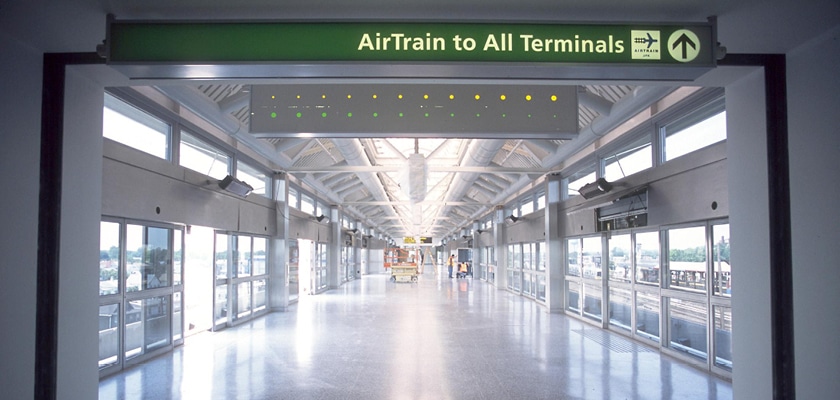
For the Silver Line Extension – which was hailed by U.S. Department of Transportation Secretary Peter Buttigieg as a way to make “life more affordable, give people better access to jobs throughout the region, reduce the time that drivers in in traffic on our roads, and provide a level of convenience getting to Dulles Airport” – the new link closes the loop on a plan that was initially supposed to be a part of the airport’s opening in 1962. The 23.1-mile extension links Dulles to the economically growing areas of Tysons Corner and Reston in Fairfax and Loudon counties in Virginia and encompasses 11 new stations that were designed and constructed over two phases.
But before the extension could be designed and built, STV was initially contracted by the Virginia Department of Rail and Public Transportation (DRPT) to help solve a critical budgetary roadblock for the project. In 2005, the year-end cost for the 50% preliminary design of Phase One had risen beyond the accepted threshold for the project to maintain its Federal Transit Administration New Starts funding. With the future of the project at risk, STV quickly assembled a team to work with DRPT to lower the project’s costs.
Following the successful execution of these cost analyses, STV was selected for the PMSS team as a subconsultant. In this role, the firm established cost control and change management programs as well as structural and architectural engineering, testing and commissioning, and external QA audits.
STV’s selection to the Silver Line’s PMSS team came on the heels of its crucial role supporting one of the most significant rail-to-airport links to be designed and built over the past two decades: AirTrain JFK in New York.
AirTrain JFK was the first new rail line to be built in New York City in more than 40 years and consists of an 8.3-mile light rail route between John F. Kennedy International Airport and the Long Island Rail Road commuter rail system in Jamaica, NY. As the lead designer for the AirRail Transit Consortium, STV provided completed architectural and engineering design, along with environmental services as part of the design-build-operate-maintain team. This complex project included an innovative elevated track structure, 10 climate-controlled stations, and a sophisticated operations, maintenance and storage facility.
“These programs traditionally require our team to coordinate with airport agencies, transit operators and transportation departments, adding layers of challenges and complexity,” said Patrick McCollom, P.E., vice president and senior program manager who has more than 25 years of experience overseeing the delivery of large-scale complex aviation systems. “However, STV has expertise working with all three of these jurisdictions, and a portfolio of experience from which to draw from to support our clients going forward.”
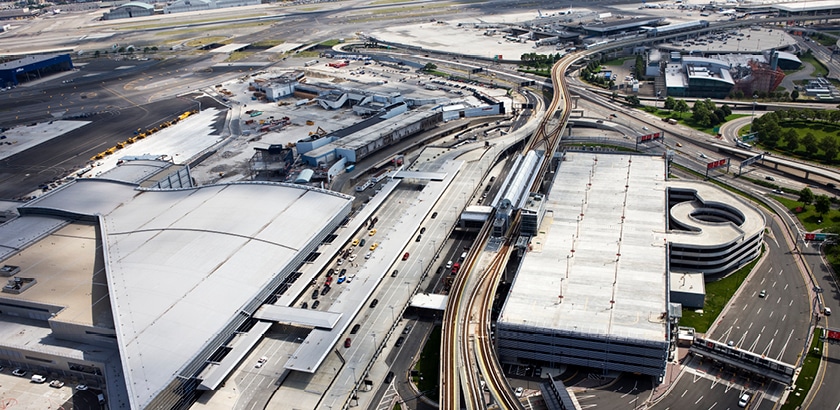
and was the first rail line to be built in New York City in more than 40 years.
Currently, STV is supporting several projects that aim to improve rail-to-airport access within the hotbed of automotive congestion – Southern California and the greater Los Angeles region.
With the Olympics coming to Los Angeles in 2028, the city is currently undergoing several major infrastructure improvement programs that will enhance mobility throughout the region, including the Airport Metro Connector, which will link the Los Angeles County Metropolitan Transportation Authority (LA Metro) to the Los Angeles International Airport (LAX).
STV has provided professional services on both ends of this connection, first in performing planning, design and environmental services for LA Metro’s 96th Street Transit Station – the terminus for this link – and then as part of the joint venture leading the development and evaluation of ground transportation options at the airport, aka the LAX Landside Access Modernization Program (LAMP).
For the 96th Street Station, STV, in joint venture, led planning coordination, conceptual engineering, and QA/QC for the preparation of an Alternative Analysis, Environmental Impact Report (EIR), and National Environmental Policy Act Categorical Exclusion for the station, which will connect the people mover at LAX with the regional Metro Rail system. During this process, the team developed plans that blended both regional and local travel needs into cohesive alternatives that met LA Metro’s objectives to better connect the airport to transit. The team also developed an implementation strategy for LA Metro, including a financial plan for the project, potential phasing of improvements, and identification of agencies that will be responsible for later stages of development.
At the other end of the connection, for LAMP, STV, in joint venture-led facilities planning and engineering, looked at the development of the 2.25-mile-long Automated People Mover that would connect LAX’s Central Terminal Area with two intermodal transfer facilities, a consolidated rental car facility, and local transit, including LA Metro’s Airport Metro Connector. This link is expected to open later in 2023.
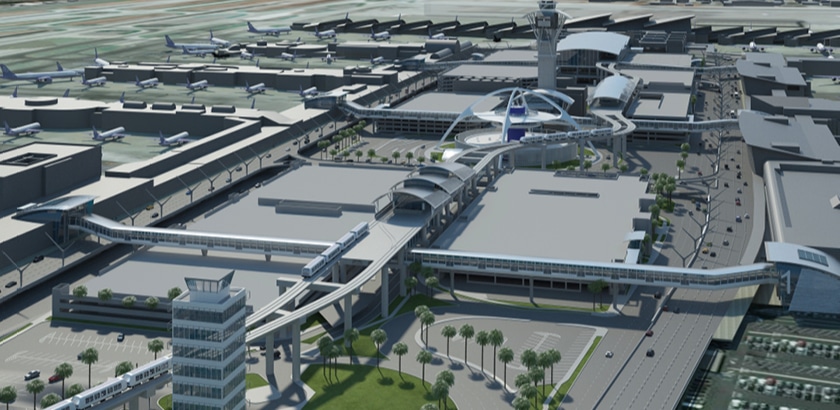
In addition to developing solutions that improve transit access to LAX, the firm is also working on several initiatives that will better serve one of the region’s other major aviation hubs, Hollywood Burbank Airport. Hollywood Burbank Airport serves about five million customers annually and is the only airport in Southern California that currently has a direct rail link to Los Angeles. As part of a larger ground access study, STV, on behalf of the Burbank-Glendale-Pasadena Airport Authority oversaw the management, planning and outreach activities that provided recommendations for improved multimodal ground access and intermodal connectivity throughout the airport. In a more recent study in the same area for the Metrolink regional rail system, STV laid out potential operational and ground connection improvements to better allow Metrolink trains to serve airport workers and travelers.
Additionally, as part of the firm’s work preparing the Environmental Impact Statement and EIR for the Los Angeles to Burbank project section of the California High-Speed Rail program, STV developed preliminary designs that would facilitate the nation’s first high-speed rail-to-airport rail link at Hollywood Burbank Airport. With the planned station expected to be constructed underground, the team had to plan how best to build the rail line under an active airport environment while Hollywood Burbank’s runways and other civil infrastructure continue to operate during the construction process.
“Southern California is poised to join other major regions in the country that have direct rail-to-airport links,” Bonstead said. “We’ve worked closely with stakeholders at the airports and transit agencies to best determine where and how to develop these solutions, while also studying things like who is expected to utilize this service, that better inform the final plans. It’s just another way STV can serve this market area.”

